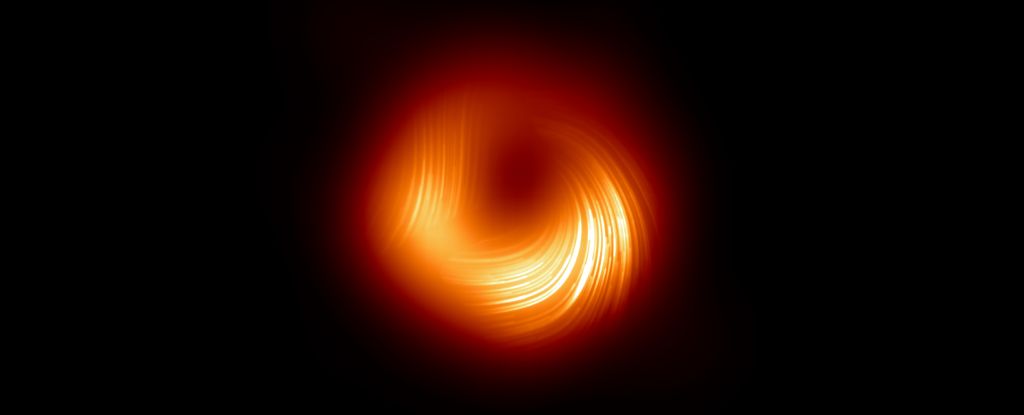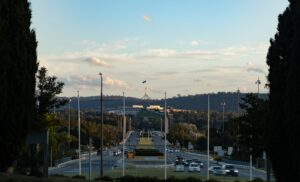
Scientists have discovered significant changes in the magnetic field surrounding the first black hole ever imaged, known as M87*. Observations from the Event Horizon Telescope taken over several years reveal a previously unobserved phenomenon: the complete reversal of the black hole’s magnetic field direction. This groundbreaking finding has implications for our understanding of black holes and their dynamic environments.
Using data collected from 2017, 2018, and 2021, researchers mapped the polarization of M87*’s magnetic field. While the black hole itself remains stable, the surrounding cosmic environment is tumultuous. The magnetic field experienced a full flip between 2017 and 2021, marking the first time such an event has been documented near a black hole.
M87* is located approximately 55 million light-years away from Earth and has a mass about 6.5 billion times that of the Sun. As the first object imaged by the Event Horizon collaboration, M87* has become a focal point for astrophysical studies. Following the release of its iconic image in 2019, researchers have continued to gather data to monitor changes in the material surrounding the black hole.
Astronomer Eduardo Ros from the Max Planck Institute for Radioastronomy highlights the importance of these jets, stating, “Jets like the one in M87 play a key role in shaping the evolution of their host galaxies.” These jets can regulate star formation and distribute energy across vast cosmic distances, thus influencing matter on a grand scale.
The formation of jets is closely tied to the black hole’s magnetic field. As matter spirals around the black hole, it forms a disk. Not all material from this disk is consumed; some is funneled along magnetic field lines, allowing it to be accelerated and ejected from the poles at near-light speeds. These jets can extend for millions of light-years, significantly impacting their surroundings.
To understand the dynamics of these jets, the Event Horizon Telescope team conducted a series of observations of M87* over multiple years, focusing particularly on light polarization. This polarization can reveal how light behaves in highly magnetized environments. Although the overall images of M87* appeared relatively unchanged, the polarization data showed striking variations.
In 2017, the magnetic fields appeared to spiral in a clockwise direction. By 2018, they shifted to an anti-clockwise orientation and stabilized. By 2021, the fields appeared to be spiraling anti-clockwise again. These findings indicate that while the black hole’s shadow remains consistent—supporting Einstein’s theory—the surrounding magnetic fields are dynamic and change significantly over relatively short cosmic timescales.
Astronomer Paul Tiede from the Harvard & Smithsonian Center for Astrophysics remarked on the implications of these changes: “This tells us that the magnetized plasma swirling near the event horizon is far from static; it’s dynamic and complex, pushing our theoretical models to the limit.”
The new research uncovers a vibrant and turbulent environment around M87*, demonstrating how the magnetic fields influence the flow of material. Some material crosses the event horizon, while other portions are expelled into space as jets. Future observations promise to expand on these findings, offering deeper insights into the magnetic environment of M87*.
Looking ahead, Remo Tilanus from The University of Arizona’s Steward Observatory announced plans for ambitious observations in March and April 2026. The Event Horizon Telescope aims to capture the first moving images of M87*, a project that has been a long-standing aspiration since the release of the initial black hole image.
This research has been published in the journal Astronomy & Astrophysics, marking a significant advancement in our understanding of black holes and their surrounding environments. As scientists continue to explore these cosmic giants, the findings from M87* will undoubtedly reshape our knowledge of the universe.






